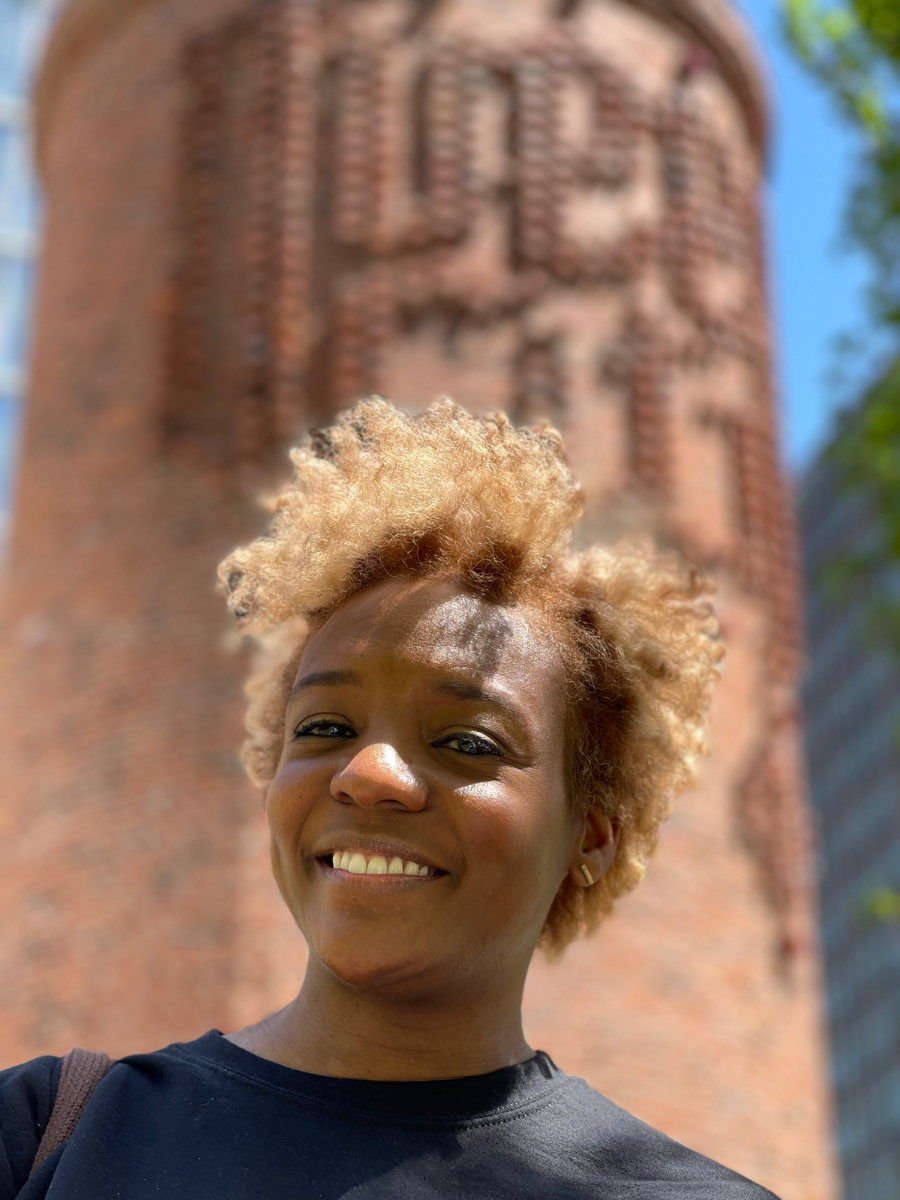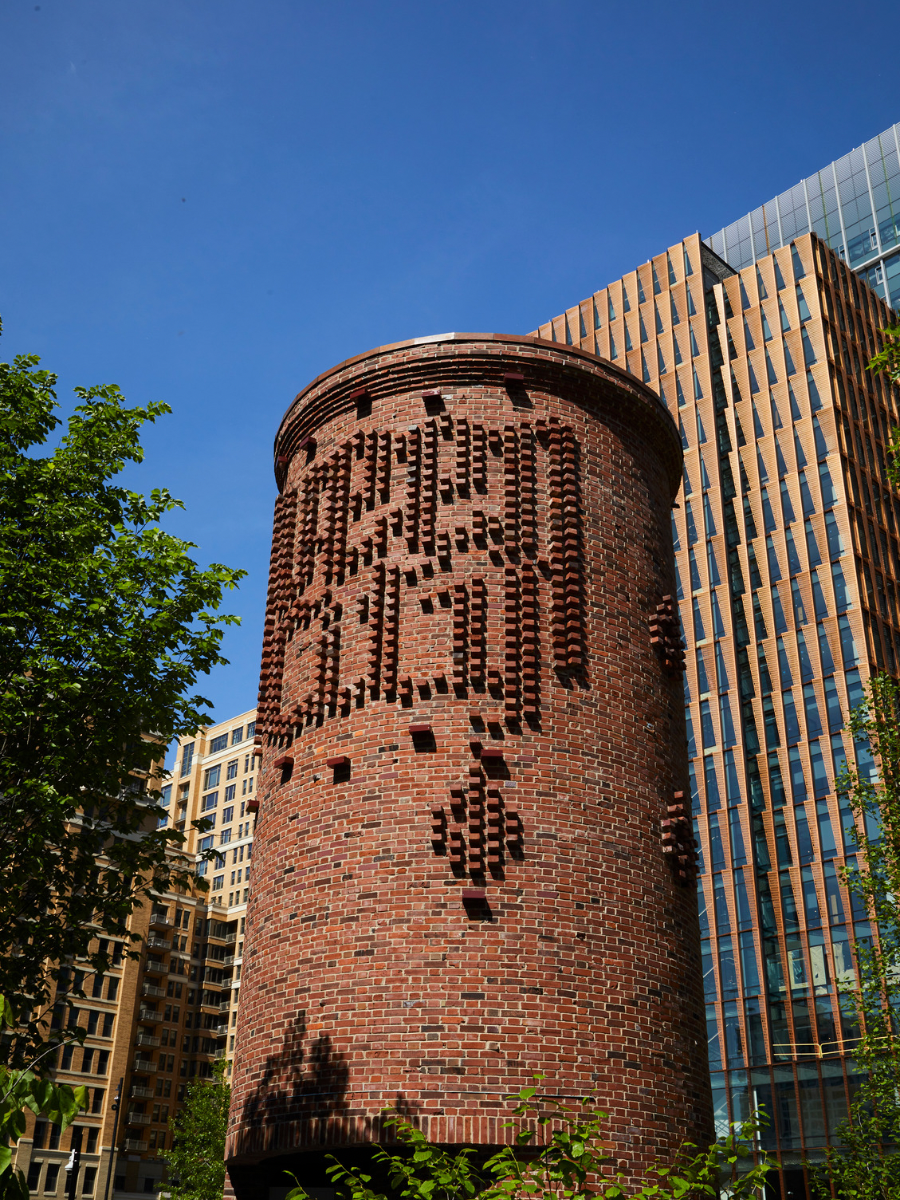Commemorating the Legacy of Queen City in Nekisha Durrett's Public Sculpture “Queen City”

Earlier this month, artist collective For Freedoms held celebratory events in Washington, DC and Arlington, VA to commemorate Nekisha Durrett’s new public sculpture, Queen City accompanied by new exhibition "Visionary Not Reactionary," showcasing Durrett’s latest installation alongside others including Sheida Soleimani, Hank Willis Thomas, Eric Gottesman, and Coby Kennedy.
Throughout the weekend, Queen City was honored with multiple events, including an opening kick-off and a conversation at the Rubell Museum with Durrett, Hank Willis Thomas, and William Vollin, a former resident of Queen City. The robust programming schedule was fit to honor the launch of the project as well as the neighborhood's history.
The sculpture is a tribute to the original Queen City, a Black, self-sustaining neighborhood that thrived for 40 years before it was demolished in 1941 for the construction of the Pentagon and other road developments. As a result of this, 903 people lost their homes with barely any notice causing them economic hardship. Durrett recognized the beauty of this community and the potential of what could have been had it not been forcefully destroyed, creating Queen City to commemorate the legacy of the community.
Standing less than a mile from the Pentagon campus, Queen City is a permanent, tower-like sculpture. Inside there are 903 ceramic teardrop vessels to signify the 903 individuals who were displaced. Durrett commissioned 17 Black ceramists from Washington DC, California, Virginia, Maryland, New York, Georgia, Connecticut, Missouri, Florida, Minnesota, and Michigan to create these stunning vessels, which are on display inside the statue.
Queen City interior shot. Credit: Nekisha Durrett Studio
Queen City interior shot. Credit: Nekisha Durrett Studio
We invited Durett for an interview to learn more about Queen City.
- How were the events during For Freedoms celebratory weekend?
The events were moving, emotionally stirring, and well-attended; save for a few, nearly the entire ceramicist collective was in attendance. Having William Vollin, a living former resident of Queen City, was extremely poignant and powerful. The atmosphere was celebratory while never losing sight of the weight of the moment — holding true to the main purpose of the celebration which was to uplift the history/unveil the history. It was so great to see so many communities come together, which is what this project is all about. The heart of this work is community, and it was important for me not only to make a “thing” to represent this former place, but that the work also be grounded in / birthed out of the very thing that was torn apart because of eminent domain.
- When did you learn about Queen City and what made you decide to make a sculpture for it?
I learned about QC approximately 2.5 years ago when I did an off-the-cuff Google search for Arlington, VA History. The initial search did not yield results related to Black history, but once I did a more pointed search for specifically Black history in Arlington, Queen City and East Arlington rose to the top. This history was not buried, but one would have to seek it out with intention to find it.
After asking a number of people, even people who lived in Arlington, if they ever learned about this history, and discovering that many did not, I knew that this history needed to be amplified. When the war department looked across the river for a place to build their behemoth headquarters (411 acres of land), they pointed to Queen City and said, “There’s nothing there. Let’s build there.” What better way to render visible these 903 individuals who called that place home within a public sculpture resplendent with 903 hand thrown vessels?
- How long was the process of creating Queen City?
From concept to completion, it took 2.5 years.
- How did you find the artists to create the teardrop vessels?
Initially, Instagram searches. If you look up ceramists, black ceramists do not populate the top results. But when you do a more pointed search, there they are in plain sight and making absolutely phenomenal work. Much like the Black history of Arlington and in cities and states all over this country, the contributions of Black ceramicists are also buried.
When I first started this project I was teaching, and I gave my students the task of researching Black ceramists, which yielded some fantastic results. We also hired a consultant to find a handful of ceramists and to perform outreach. We knew we wanted to find ceramists from across the country, and after we contacted our first cohort, we asked them to recommend ceramists in their networks that they knew should be part of this collective.
- What do you hope people take away from Queen City?
There’s a “Queen City” in every state in this country — at least one example of a BIPOC community whose disappearance was either state and/or federally sponsored. I think that it is my role to bring forward histories that lay just beneath the surface. Making something visible that has been rendered invisible is a powerful thing — an artist's superpower. Once you know that something exists, you are implicated in a sense. Now perhaps the viewer, legislators, and policy-makers can begin to ask on a deeper level “What does it look like to repair historical harm?”
Queen City exterior shot. Credit: Nekisha Durrett Studio
Queen City exterior shot. Credit: Nekisha Durrett Studio



